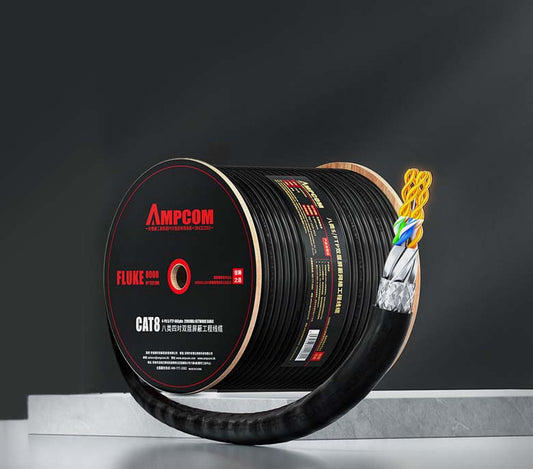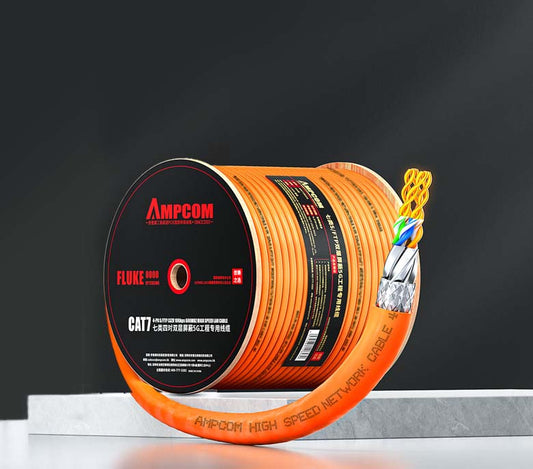PoE++ on 28AWG: Thermal Limits, Safe Bundle Sizes, and Voltage-Drop Math You Can Trust
Last updated: October 30, 2025
Use 28AWG for short patching and high-density dressing, but cap total 28AWG patch length per channel and keep bundles modest, especially at 802.3bt Type 4 (up to 90 W). If ambient is warm (≥35 °C) or bundles are dense, move critical runs to 26/24AWG, shorten patching, and re-check voltage drop with our PoE budget guide.
Why do engineers love 28AWG? It makes dense racks manageable and improves airflow. Why are they wary under PoE++? Thinner copper means higher DC resistance—more voltage drop and more heat in bundles. Both chip away at device stability and can amplify noise. This article gives you conservative, repeatable rules and the math to justify them.
PoE++ basics in one paragraph
802.3bt adds two higher-power classes. Type 3 (up to ~60 W at PSE) and Type 4 (up to ~90 W at PSE) deliver current on four pairs. The maximum continuous current per energized pair can approach 0.6 A (Type 3) and 0.96 A (Type 4). That current runs through your patch cords and horizontals—so conductor gauge and bundle heat matter a lot. If you are also pushing high data rates, re-read our 28AWG trade-offs.
The simple voltage-drop math (works on a napkin)
Voltage drop per pair is V = I × Rloop, where Rloop is the round-trip resistance of the two conductors in that pair. For quick estimates, use typical DC resistance per conductor of ~22 Ω/100 m for 28AWG and ~9 Ω/100 m for 24AWG. Example with 28AWG patching:
- Two 3 m 28AWG patches (one at each end) → total 6 m of 28AWG per conductor → R per conductor ≈ 1.32 Ω; loop per pair ≈ 2.64 Ω.
- Type 4 current per pair ≈ 0.96 A → Vdrop ≈ 2.53 V across the patch cords alone.
That’s before you count the horizontal link. If your PD needs a firm voltage headroom (many do), you can burn margin quickly with long/thin patching. Use our voltage-drop guide to run the full channel math and derate for temperature.
Heat is the quiet killer in dense bundles
Higher current in thinner conductors means higher I²R heat. In large bundles, that heat stacks and raises cable temperature, increasing resistance further. Symptoms: PD brownouts during load spikes, link flaps, or unexplained performance noise. Good cable management matters as much as the math—see indoor cable practices and our labeling guide for clean routing that helps airflow.
Conservative rules you can defend on site
- Cap total 28AWG patching per channel. For Type 4, keep combined 28AWG patch length at ≤6 m (both ends added). If you need more patching, switch at least one end to 26/24AWG.
- Prefer thicker cords near the PHY. A short 24–26AWG patch at the switch gives back margin for the rest of the channel.
- Keep bundles modest and breathable. Avoid fully tight ties; insert spacers at the ladder-rack throat; distribute PoE++ links across pathways.
- Mind ambient temperature. Warm rooms (≥35 °C) make thin cords less forgiving. Reduce bundle counts or step up gauge.
- Re-test after dressing. Do the power-on test last. Load PoE++ devices, check link counters and device voltage while everything is warmed up.
Suggested safe bundle sizes (conservative)
Use this table as a starting policy for patch-cord bundles at the rack. It’s intentionally conservative; your exact cable and environment may allow more, but this keeps you out of trouble.
| Ambient (°C) | PoE Class | 28AWG Suggested Max in One Tight Bundle | Notes |
|---|---|---|---|
| 25 °C | Type 3 (≤60 W) | 24 | Loosen ties; space bundles every ~30–40 cm. |
| 25 °C | Type 4 (≤90 W) | 12 | Prefer 26/24AWG if sustained full-load. |
| 35 °C | Type 3 | 16 | Add airflow; avoid tight front-to-back stacks. |
| 35 °C | Type 4 | 8 | If you need more, move to 26/24AWG or split bundles. |
Acceptance checklist (what to document)
- Patch length log: Record total 28AWG meters per channel.
- Bundle map: Count per bundle and note ambient temp.
- Voltage under load: Measure PD input during peak draw; compare with your budget sheet from the PoE guide.
- Link health: Run an error/CRC counter check while devices are powered and warm.
When to step up from 28AWG
If you’re pushing 4K60 AV or 10G data alongside PoE++, thin patching can erode margin on both the power and data sides. Prefer 26/24AWG cords at the switch, keep total thin-gauge patching short, and verify channel SNR. If you suspect EMI on top of heat, study shielded vs unshielded patching and, where applicable, check proper STP grounding.
Related reading: PoE voltage-drop guide · 28AWG thermal trade-offs · MPTL for cameras & APs · Component vs Channel testing
FAQ
How much 28AWG patch length is “too much” for PoE++?
As a conservative policy for Type 4, keep total 28AWG patching ≤6 m per channel. If you need longer, switch one end to 26/24AWG.
Will 28AWG overheat in big bundles?
It can. Limit bundle size, improve airflow, and spread PoE++ links across pathways—especially in warm rooms (≥35 °C).
Do shielded cords help with PoE++?
Shielding manages EMI, not voltage drop, but in noisy spaces it can stabilize links. If you use STP, follow proper grounding.
What’s the quickest field check?
Measure PD voltage under real load after 10–15 minutes of operation and compare against your budget. If margin is thin, shorten patching or step up gauge.



